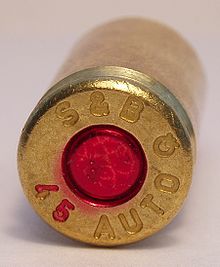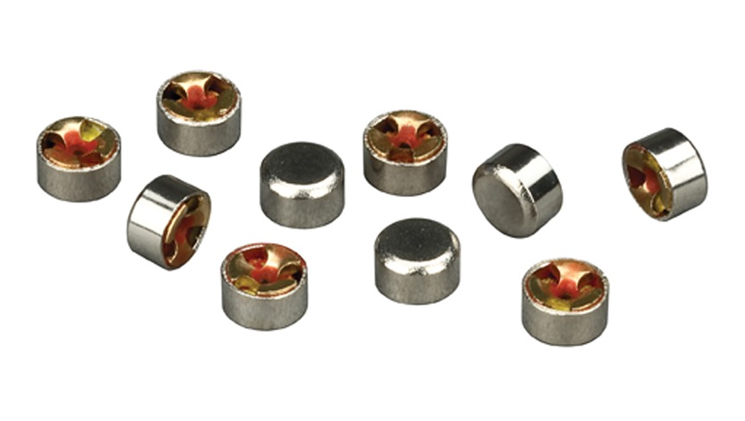An Unbiased View of Cci Primers
Wiki Article
An Unbiased View of Primers In Stock
Table of ContentsHow Federal Primers can Save You Time, Stress, and Money.The Single Strategy To Use For Winchester PrimersThe Of Remington PrimersA Biased View of Reloading PrimersRifle Primers Things To Know Before You Get This
Part of the firearm cartridge for initiating propellant burning In weapons as well as artillery, the primer () is the chemical and/or device liable for launching the propellant burning that will certainly press the projectiles out of the gun barrel. In early black powder weapons such as muzzleloaders, the primer was basically the same chemical as the main propellant (albeit generally in a finer-powdered type), but poured right into an outside flash frying pan, where maybe ignited by an ignition resource such as a slow-moving match or a flintlock Some muzzleloaders have primers like cap gun caps.
In artillery the guides are frequently a different part, positioned inside the barrel to the rear of the main propellant chargebut there are other examples of guns, including for example some automated weapons, created to shoot cartridges with important electrical primers.
The Of Small Pistol Primers

With the introduction of hand-held guns, this came to be an undesirable method of firing a gun. Holding a burning stick while attempting to put a charge of black powder carefully down a barrel is harmful, and trying to hold the gun with one hand while all at once aiming at the target and looking for the touchhole makes it very challenging to fire accurately. The very first effort to make the procedure of shooting a small arm less complicated was the "matchlock".
, and also dried out. After the weapon was filled and the touchhole primed with powder, the burning suggestion of the match was placed so that the lock would certainly bring it into contact with the touchhole.
Primers For Sale for Dummies
This brought the match down to the touchhole, sparking the powder. With mindful interest, the slow-burning suit might be kept burning for extended periods of time, and the use of the lock mechanism made relatively precise fire possible. The following change in ignition technology was the "wheel-lock". It made use of a spring-loaded, serrated wheel which rubbed versus a piece of iron pyrite, comparable to a modern-day lighter.

The protected flashpan additionally offered some ability to withstand negative weather. The wheel-lock delighted in only a brief period of popularity before being superseded by an easier, more robust design.
The Best Guide To Primers In Stock
As the name indicates, the flintlock made use of flint instead than iron pyrite. The flint was held in a spring-loaded arm, called the "dick" from the similarity of its activity to a pecking chicken. The dick revolved through roughly a 90-degree arc and was held in the tensioned, or "cocked" setting by a trigger. https://www.businessorgs.com/author/relodprim3rs/.The "half-cock" setting held the cock midway back, and also utilized a deep notch to make sure that pulling the trigger would not release the cock. Half-cock was a security placement, utilized when loading, keeping or bring a packed flintlock. The "full-cock" placement held the cock all the method back and also was the setting from which the weapon was discharged.
It functioned as both a flashpan cover and also a steel striking surface for the flint. The frizzen was pivoted and spring-loaded so that it would lock in the open or shut setting. When closed, the striking surface was positioned so that the flint would strike at the proper angle to generate a stimulate.
The Of Reloading Primers
The flintlock mechanism was easier and more powerful than the wheel-lock, as well as the flint as well as steel provided a good, reputable source of ignition. The flintlock remained in military service for over 200 years, as well as flintlocks are still made today for historical re-enactments as well as muzzle-loading target competitors, and for hunters who delight in the added obstacle that the flintlock supplies.Percussion ignition was designed by Scottish clergyman Rev. Alexander John Forsyth in 1807 however needed even more improvements before it was progressively accepted in the 1820s to 1830s. By the center of the 19th century, the percussion or caplock system was well established. It was embraced by both sides in click now the American Civil Battle, as it was less complex as well as much more reliable than the flintlock.
The flashpan as well as frizzen were eliminated and also replaced by a small, hollow straight cylinder (drum) screwed right into the bored-out and tapped flash hole and also carrying a "nipple" over which the cap can be fitted. A "hammer" which likewise had half-cock (for loading and also using the cap) as well as full-cock positions changed the cock.
Report this wiki page